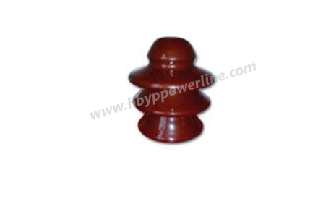Power Line Fittings supplier shares this article for you.
Although composite insulators are generally considered "unbreakable" (at least compared to ceramic equivalents), experience has shown that this is only partially correct. Despite its flexibility and non-fragility, improper operation may result in a failure mode that is very different from other insulator technologies. For example, in tension applications, damage to the insulator sealing system or its FRP mandrel has been reported due to torsional overloads when the conductor is wired. Although the existing CIGRE handling guidelines mainly focus on mechanical damage and corresponding premature failures, the growing experience has allowed many utility companies to customize and expand the content of this document. In fact, some areas added overtime should now be seen as necessary updates to the original document.
1. Corona/Arc Protection
Composite insulators need to pay more attention when designing appropriate anti-corona protection measures, that is, due to excessive electric field gradient, the air near the high voltage side or the ground side is ionized. This is because of their relatively small diameters, although advantageous in terms of pollution performance, make their housings and sealing systems more prone to aging and damage under continuous corona discharge. If the insulator string is deemed to require corona or a combined corona/arc protection device, the supplier shall also provide detailed instructions to guide the installation personnel on the line.

Porcelain Stay Insulators
Second, mold growth
In the working environment with increased humidity and temperature and the presence of various molds, the surfaces of Porcelain Stay Insulators and composite insulators may form colonization. The effect of inert glass or ceramic surfaces is relatively small because these materials are already hydrophilic. Therefore, mold growth can only increase the thickness of the contaminated layer. However, for composite insulators with hydrophobic surfaces, this valuable performance enhancement feature may temporarily weaken or even disappear. Fortunately, experience has shown that in relatively few cases, mold growth needs to be removed. Once a large number of colonies are identified, the decision to relocate is usually only a preventive measure. Laboratory investigations confirmed that only the white-rot fungus Pseudomonas chrysogenum can truly degrade the main components of the silicone rubber polymer.
Recently, it has been reported that when long-term storage of composite insulators in crates exposed to rain and warm temperatures, mold growth will occur. These crates are usually made of wood and imported into many countries require pretreatment (ie ISPM 15). However, studies have shown that this pretreatment has no effect on the subsequent growth potential of mold, and practical experience shows that the design of the wooden box needs to be compromised: on the one hand, the internal space of the ventilation needs holes or grooves; on the other hand, the internal space of the ventilation needs holes or groove. d. Their size should be small enough to prevent contamination or animals from entering. Depending on the climate, when wood crates are completely exposed to the environment, they will quickly degrade. If the insulation in the crate is not protected, or if the protective layer has been removed from early use, water containing organic matter in the wood may contact the surface of the insulation and cause colonization of the fungus. There are a variety of species around the world that can be used to produce this "biologically derived" pollution.
From the user's perspective, there are two possible scenarios: 1. Insulators can be covered with fungal species, such as Aspergillus niger and Mycobacterium, their surface is very shallow, it is easy to be removed, the previous colonization area becomes completely hydrophobic again, or; 2. The combined colonization of the fungus species Chaetomium and Cladosporium has a symbiotic effect with Methylobacterium and can form a pink appearance on the surface of the insulator. Although the mold is easy to remove, the color diffuses into and remains in the silicone rubber bulk material. The surface of these pink residues will become hydrophobic after cleaning, so the original performance will be restored, but the beauty will be lost.
+86 319 878 9350
+86 156 1304 7999
+86 319 878 9350
NanYan, DongHuan Road, Shahe, Hebei China
Copyright © Hebei Yipeng Line Equipment Co., Ltd. All Rights Reserved. | Sitemap Powered By 
